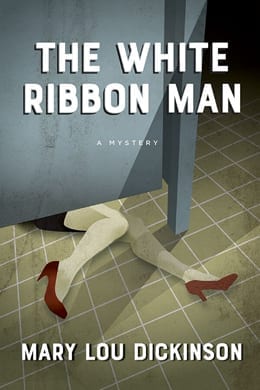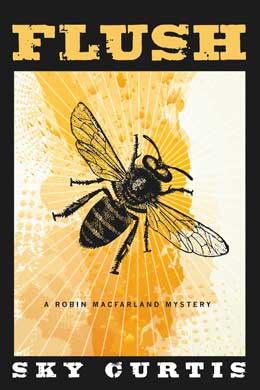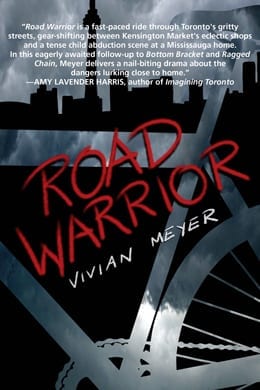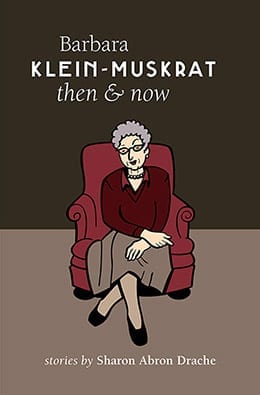The White Ribbon Man is a murder mystery set in Toronto. A woman’s body is found in the basement toilet of a downtown Toronto church. It is an Anglican church that welcomes homeless people for coffee and soup and has a congregation composed largely of social activists. The discovery challenges a community that sees itself as a compassionate one and causes people who once were comfortable with each other to become suspicious instead. During the investigation we get to know something about the minister whose sleepwalking makes him suspect, a librarian who answered the classified ad in the Globe and Mail placed by another suspect; one of the wardens who is an activist against violence against women, a member of the congregation who was the neighbour and friend of the murdered woman, and the detective in charge of the investigation. The gentle handling of all of these characters and their issues allows the reader to see humanity and vulnerability of each one and the way in which as a community they support one another.
“After a woman is found dead in a downtown church basement, nearly everyone becomes a suspect. Dickinson deftly takes us into the world of a social-justice community and their struggles to cope in the aftermath of violence. When a writer and cop unintentionally team up, imagination and evidence blur. This is a page-turner with an unexpected plot-twist that will leave the reader guessing until the very end.”
—Farzana Doctor, author of All Inclusive, Six Metres of Pavement, Stealing Nasreen
“An insightful and contemplative literary mystery that is steeped in religion, lost loves, loneliness, and the desire for companionship and meaning in life. A beautifully written poignant and touching exploration of human hopes and frailties.”
—Lisa de Nikolits, author of No Fury Like That, The Nearly Girl, Between the Cracks She Fell & four other novels
“A well imagined story of how a horrible crime not only upends lives, but the trust of a community. In The White Ribbon Man, Mary Lou Dickinson also explores the mental and emotional injuries that children suffer under the unrelenting demands of fundamentalist religion. It’s a book that will leave you thinking.”
—Ken Murray, author of Eulogy (a novel)
Mary Lou Dickinson‘s publications include a collection of short fiction, One Day It Happens (2007) and two novels, Ile d’Or (2010) and Would I Lie to You? (2014). Her fiction has also been published in a number of literary journals, including the University of Windsor Review, Descant, Waves, Grain, Northern Journey, The Fiddlehead, Impulse, and Writ, and broadcast on CBC Radio. Her writing was also included in the anthology, We Who Can Fly: Poems, Essays and Memories in Honour of Adele Wiseman. She grew up in northern Quebec and currently lives in Toronto.
A few people who had heard the same sound Rosemary had noticed squirmed around to see if they could figure it out. Puzzled brows coming together, eyes darting over the space of the nave, all these gestures expressed their uncertainty about what they ought to do. Rob came through the door, but instead of going to sit in a pew, started across the wooden floor toward a staircase to the basement. The minister was not far behind, perhaps realizing that Rob had pinpointed the sound from outside and it was time to check out the area it had most likely come from. Then Linda O’Reilly, a rather heavy woman with hair dyed red, followed them, heading toward the stairs also. Below was a washroom for women and, a little further along the corridor, one for men. They were small washrooms, each with two cubicles. Between them in the hall was a water fountain. The stairs were of the same heavy wood that extended throughout the church, but the floor in the basement was tiled. The sound had stopped, but just as Rob came down into the hall, a woman emerged from the first washroom.
Upon seeing Rob, the woman began to shudder. “On the floor,” she said in a quaking shrill voice. “Feet… sticking out. Blood.” She was visibly shaken, her face contorted, her dark leather purse fallen or left open.
David Stinson, the priest, pushed past Rob through the door. His face, if anyone could see his clenched jaw, looked as if he had to contain his own fear so as not to frighten anyone else. Solace in crisis situations was often some form of quiet meditation for him, impossible in these circumstances. Praying almost silently, he saw a pair of feet wearing red heels stretched out from under the cubicle on the right and made a low, guttural sound. Then he pushed the cubicle door gingerly to reveal a woman face down on the floor with one arm flung off to the side, so still he thought she must surely be dead. There was blood on the floor and wall and he felt bile rise in his throat. He turned to tell Rob and, seeing the other man clutch at his throat, remembered that Rob had not long ago watched his partner die of AIDS and soon after had seen two men carry him out of the house in one of those dark bags. He thought that would explain why he appeared to be having memories of some recent trauma.
“Don’t let anyone else into the basement,” David said. “I’ll call the police.”








inannaadmin –
The White Ribbon Man by Mary Lou Dickinson
reviewed by Edward Brown
Canadian Woman Studies/les cahiers de la femme Vol. 33, No. 1,2 – winter/spring 2019
Shoehorned in behind Toronto Eaton Centre—a modern glass and steel edifice where shoppers worship en masse at the altar of consumerism—sits The Church of the Holy Trinity, AD 1847. For more than a century and a half the Anglican Church, the fictional setting for Mary Lou Dickinson’s (One Day It Happens, Ile D’or, Would I Lie to You?) murder mystery, The White Ribbon Man, has experienced more than its share of indignities.
The old grey church in the square has never had an easy go of it. The Gothic Revival structure was originally constructed on swampy land at the forested outskirts of a fledgling city with funds bequeathed to the Toronto diocese by an English heiress who wouldn’t survive past her twenty-fifth birthday. Eventually situated in a slum neighborhood known as The Ward, Holy Trinity fast became a life raft for an impoverished community drowning in urban squalor.
Throughout its long history and up to the present, Holy Trinity has faced threats from fire, the wrecking ball, expropriation, and bankruptcy. A couple of years ago an arsonist tried, but mercifully failed, to torch the place of worship. If that wasn’t bad enough, ongoing construction in the vicinity appears to have caused significant structural damage to sections of the church’s limestone walls.
For 171 years Holy Trinity has taken these abuses in stride. Then along comes Dickinson’s page-turner. The novel opens pleasantly enough the hardboiled detective and foreboding mood. Although on a sunny, autumn Sunday morning as regular congregants and strangers alike greet one another in the welcoming, inclusive spirit that defines Holy Trinity. Pleasantries are quickly dashed when, minutes before the service is to commence, a congregant discovers the fashionably dressed corpse of Marni Atchison, an outcast from a religious organization known for sermonizing on porches and crowded sidewalks, her stylish, red heels jutting from under a bathroom stall in the basement.
Will the indignities ever end?
To solve the crime Dickinson adeptly plugs into the veins of activism that course through the congregation. Parishioners may be alarmed by the heinous crime that has occurred in their house of worship but they refuse to cower. While some make efforts to clear their name, with the assistance of kindly homicide detective Jack Cosser and partner Steve Reid whose sexual orientation is currently in flux, sleuthing members set out to solve the murder.
The White Ribbon Man disposes of predictable mystery novel devices and unlike some authors working in the genre today who revel in scripting pages of gory violence, Dickinson’s approach falls closer to an old school Dashiell Hammett potboiler, minus the hard-boiled detective and foreboding mood. Instead of plucking characters straight out of central casting like a gruff, jaded homicide detective or the benevolent and wise clergyman, Dickinson turns these types on their head.
There is no getting around the fact that Detective Cosser is, well, a swell guy. Heck, he’d rather have a soothing spot of chamomile tea over black coffee any day. Cosser’s marriage may have flatlined, a casualty of the emotional toll his grisly occupation can have, but not once does he trash talk his ex to fellow officers or the couple’s preteen daughter who Cosser loves to bits.
The author gives Father David, the collarless, blue-jean wearing priest a similar refreshing treatment. The man leading the flock is self-absorbed, insecure, and suffers from chronic somnambulism. Throughout, the sleepwalking priest struggles to fill sizable gaps in his memory, wide enough to navigate Noah’s Ark through. Is he the culprit? Not even Father David can say for certain.
Rosemary the sleuthing librarian may be the best hope for solving the homicide but admittedly, her crime fighting knowhow is limited to skills gleaned from episodes of Homicide: Life on the Street. Did Rosemary encounter the killer after responding to a personal ad in the classifieds agreeing to a luncheon date with a redheaded stranger, a white ribbon pinned to his lapel? Was she the intended victim? Does the key to tracking the killer lie with Ardith, nonverbal and confined to a wheelchair vis-à-vis Jimmy Stewart’s character in Hitchcock’s Rear Window?
The plot of Dickinson’s thriller is not complex. She writes with intentionality leaving nothing to chance. The author’s strength lies in fleshing out diverse characters who display the best, as well as the most deplorable, aspects of human nature. Although events unfold primarily in the church, in respect to the institution, The White Ribbon Man is not reverential. However, there are moments when the reader is subjected to what feels like mini sermons on Dickinson’s behalf. For example, upon arriving at the crime scene, Detective Cosser observes the crowd of homeless milling about and laments, “Soon winter will come and one of these men could die of the cold out there.”
In the end, The White Ribbon Man provides a sobering parable reinforcing lessons on the destructive nature shame can wield over individuals obsessed with hiding past deeds and the blinding influence of hypocrisy.
Edward Brown is an author and freelance writer. His work appears in the Globe & Mail, Torstar, Spacing Magazine and other publications.
Renée Knapp –
Murder and Sin in T-Dot
The White Ribbon Man by Mary Lou Dickinson
reviewed by Carla Kristmar Harrison
60th Anniversary Spec. issue of Canadian Literature 239 (2020): 133-134.
https://canlit.ca/article/murder-and-sin-in-t-dot/
Excerpt:
Woven into the fabric of two distinctly different plot lines by two stylistically opposed authors is one thread which, against all odds, connects these stories, albeit tentatively. This thread is the Six, the Big Smoke, the Queen City herself: Toronto. Randy Boyagoda’s Original Prin and Mary Lou Dickinson’s The White Ribbon Man are both set in the 416, and neither author shies away from featuring the city. While Boyagoda’s descriptions of his home city serve as stark juxtapositions to the unfamiliar, exciting, and dangerous Middle Eastern city of Dragomans, Dickinson’s include landmarks that create a sense of familiarity for her Ontarian readers, allowing them to explore themes such as murder, betrayal, faith, and community in a comfortable atmosphere.
Unlike Boyagoda, Dickinson keeps her characters at home, showing that we don’t need to look far to find monstrosity; we may even find it in our own holy places. Dickinson focuses on the tightly knit community of a downtown Anglican church shaken by the discovery of the body of a murdered woman in the basement washroom. The White Ribbon Man is Dickinson’s first crime thriller, yet she uses the narrative structure developed in previous works to explore the mystery from multiple angles and perspectives. We meet and come to know Dickinson’s characters, the congregation, through their reactions to the dead body and their statements to Detective Jack Cosser as they attempt both to help the investigation and to remove themselves from suspicion. On the face of it, Dickinson’s novel is a classic whodunit. But this book engages us on a much deeper, more substantial level because she uses the genre to explore important and timely questions about humanity. Who are we when nobody is looking? In times of trial and uncertainty, do we unite as communities, or do we splinter? What does it mean to be accepting of others’ lifestyles and choices while also maintaining personal and spiritual ideals? How well do we actually know and trust each other? Even if the novel does not offer succinct answers to these questions, we are left pondering them ourselves.
In terms of style and content, Boyagoda’s and Dickinson’s novels could not be more different. And yet, at the heart of each is an underlying comfort and familiarity that offsets the tumultuous, sometimes sinister, subject matter. Both authors allow their beloved city, Toronto, to take on a supporting role. Whether Prin is struggling with matters of faith and a midlife crisis, or Detective Cosser is uncovering a congregation’s guilty secrets, the city offers the kind of comfort that hangs around in the background, never making itself conspicuous, yet always there. It’s the kind of comfort we can only find when we go home.